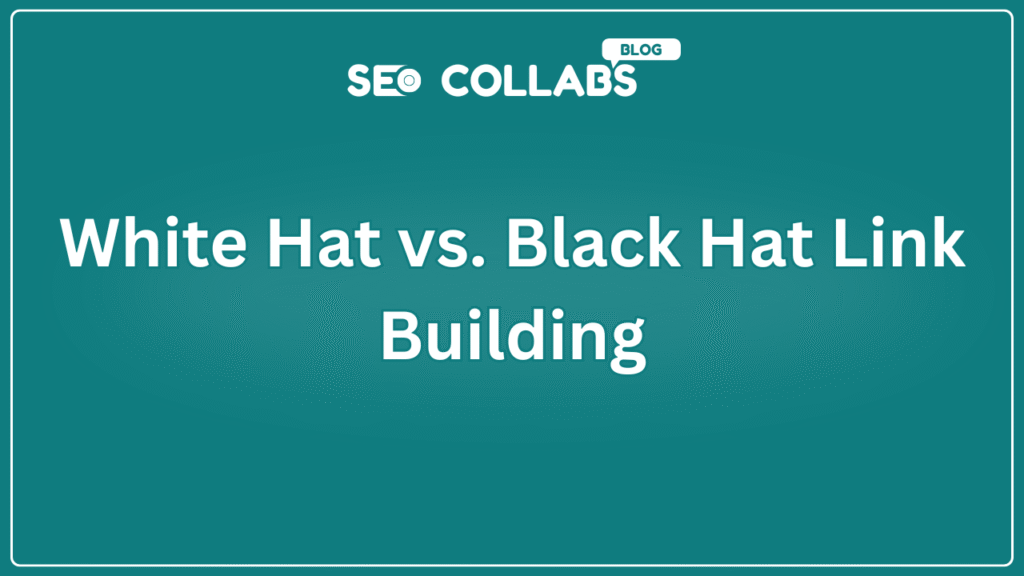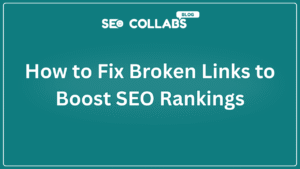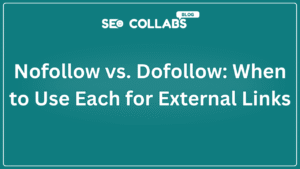In the world of SEO, link building is important of success—but not all strategies are created equal. Understanding the difference between white hat (ethical) and black hat (manipulative) link building is critical to safeguarding your website’s rankings, reputation, and long-term growth. Here’s a breakdown of both approaches, their risks, and why ethical practices always win.
Table of Contents
What is White Hat Link Building?
White hat link building strategies prioritize compliance with search engine guidelines and focus on earning links organically by delivering value. These methods are sustainable, user-centric, and designed to build genuine authority.
Key Techniques:
- Creating High-Quality Content: Develop in-depth guides, original research, or tools that naturally attract backlinks.
- Guest Blogging: Write for reputable sites in your niche, contributing valuable insights.
- Broken Link Building: Find broken links on relevant sites and suggest replacing them with your content.
- Digital PR: Earn media coverage through press releases, expert interviews, or data-driven stories.
- Building Relationships: Collaborate with influencers or industry leaders for co-branded content.
Benefits:
- Sustainable Growth: Links earned through value last longer and drive consistent traffic.
- Algorithm-Proof: Aligns with Google’s E-E-A-T (Experience, Expertise, Authoritativeness, Trustworthiness).
- Brand Credibility: Positions you as a trusted resource in your niche.
What is Black Hat Link Building?
Black hat link building tactics exploit loopholes in search engine algorithms to manipulate rankings quickly. These methods violate guidelines and risk severe penalties.
Key Techniques:
- Buying Links: Purchasing backlinks from low-quality or irrelevant sites.
- Link Farms/Private Blog Networks (PBNs): Creating a network of websites solely to cross-link.
- Spammy Comments/Forums: Posting irrelevant links in blog comments or forums.
- Keyword Stuffing in Anchor Text: Overusing exact-match keywords (e.g., “cheap insurance”).
- Cloaking: Showing search engines different content than users see.
Risks:
- Google Penalties: Manual actions or algorithmic demotions (e.g., Google Penguin).
- Loss of Rankings: Entire domains can be deindexed.
- Wasted Resources: Short-term gains often lead to long-term losses.
Grey Hat: The Middle Ground
Some tactics straddle the line, like aggressive guest posting or paid links disguised as organic mentions. While not explicitly black hat, they carry risks if overused or misaligned with user intent.
Also Read
Why White Hat Always Wins
- Survives Algorithm Updates: Google’s core updates (e.g., Helpful Content Update) reward quality.
- Builds Trust: Users and search engines favor sites that prioritize value.
- Long-Term ROI: Ethical links compound over time, driving steady traffic and conversions.
How to Recover from Black Hat Mistakes
- Audit Your Backlink Profile: Use tools like Ahrefs or Google Search Console to identify toxic links.
- Disavow Harmful Links: Submit a disavow file to Google to distance yourself from spam.
- Rebuild Ethically: Shift focus to content marketing, digital PR, and relationship-driven strategies.
White Hat vs. Black Hat: A Quick Comparison
| Factor | White Hat | Black Hat |
| Compliance | Follows search engine guidelines. | Violates guidelines. |
| Speed of Results | Slower but sustainable. | Fast but risky. |
| Risk Level | Low (penalty-proof). | High (deindexing, fines). |
| User Focus | Prioritizes value for visitors. | Prioritizes search engine manipulation. |
| Example Tactics | Guest blogging, original research. | PBNs, link buying, spam comments. |
Case Study: The Cost of Black Hat
A travel blog used PBNs to boost rankings for “best tropical vacations.” Initially, they reached #1 on Google. After the 2022 Google Core Update:
- Penalty: Manual action for unnatural links.
- Result: Traffic dropped by 90%, recovery took 8+ months.
How to Stay Ethical
- Follow Google’s Webmaster Guidelines: Avoid shortcuts.
- Focus on E-E-A-T: Create content showcasing expertise and trustworthiness.
- Use Tools Like SEO Collabs: Partner with vetted, high-quality sites for safe link exchanges.
Conclusion
Black hat link building is a gamble with your website’s future. While white hat strategies require patience, they build lasting authority, trust, and traffic. In an era where search engines prioritize user experience, ethical practices aren’t just smart—they’re essential.

Ready to Grow Safely? Join SEO Collabs to connect with ethical partners and build links that stand the test of time.
About SEO Collabs: A platform for white hat link-building. Exchange links with verified sites, track performance, and stay penalty-free—no spam, no shortcuts.




